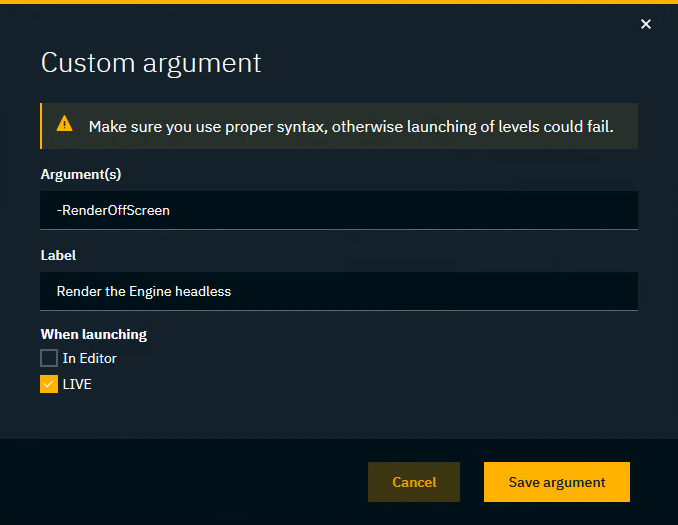Change show settings
Linked projects
Displays the projects linked to this show file. It also shows its availability (Status) on this machine.
Projects handled by the Asset Hub have additional options.
Learn more about how to Sync projects and other files in Synced storage

Add project link
To add a project managed by the Asset Hub, copy the project folder into ...\Pixotope\Synced Storage\Projects\ before, then add the project link.
Click on "Add project link"
Browse to the
.uprojectfile of the project which should be linked and click "Select"
Remove project link
Click on the Trash can icon in the linked project row
If only one linked project exists, it can not be removed.
Edit project path (Stand-alone and Server role)
Click on "Edit project path"
Browse to the new location of the
.uprojectand click "Select"
Server machine: Editing the path of the linked project will affect all Client machines.
Edit local project path (Client role)
Client machines can override the project path locally in case their project path is different
Click on "Edit local project path"
Browse to the location of the
.uprojectand click "Select"
The project with a local override is indicated with - local override
Remove local override
To remove the local override and go back to using the server machine’s project path:
Click on "Remove local override"
Learn more about Show file and linked project
Import from other show
Allows you to import configuration and calibration settings (Base settings, Camera systems, Media inputs and outputs) from another show on the same or another machine.
To import a setup into the open show:
Click "Import from other Show" in SETUP > Show > Show settings
Select the machine you want to import the setup from
Select the Show
Select the items to import
base settings
camera systems*
media inputs and outputs*
The "Import result" dialog shows whether any problems have occurred while importing or applying the setup.
* Items with the same name will be overwritten.
Base settings
Frame rate
Choose the project’s frame rate.
Learn more about Supported video formats and frame rates
Multi-machine syncing
Enable multi-machine syncing based on the primary timecode. The status of this setting is also shown in the Status panel.
Learn more about how to Configure timecode (LTC)
Learn more about the Status panel in Pixotope Director - Interface
Filmic tone mapping (global)
Enables Unreal’s filmic tone mapper globally.
Learn more about how to Configure the color pipeline
If enabled, the values can be changed in the Color grading panel.
Learn more about how to Adjust color grading
Camera input switching
Enable the ability to switch between multiple camera systems (video and tracking source) in the routing panel.
If disabled, the first camera system routed to a machine is used.
Defaults
Choose the default values for
Input/Output
Video format
Color profile
used in Configure > Routing.
Engine startup arguments (EDITOR/LIVE)
Requires restarting levels.
Render the Engine headless (-RenderOffScreen)
This starts the Engine without any visible rendering at all on the local machine.
Custom arguments
Here you can add custom commands to control how the engine behaves when launched.
Click “Add custom argument”
Write out as many commands as you like into the Argument(s) field
Give your argument(s) a Label for easier recognition. This label will also be displayed in a notification bar in the Launch panels, each time an argument is toggled on
Choose to apply the custom argument when launching In Editor and/or LIVE

A notification is shown in the Launch panel, when custom arguments are applied.

Make sure you use proper syntax when typing your commands, otherwise launching levels could fail. A helpful guide, and list of available arguments can be found here
→ https://docs.unrealengine.com/en-US/command-line-arguments-in-unreal-engine/
Experimental features
These features are experimental. We do not recommend using them in production.
Continue to Configure camera tracking
